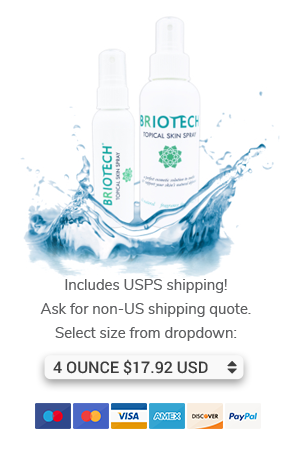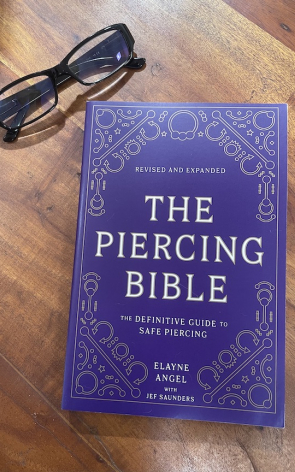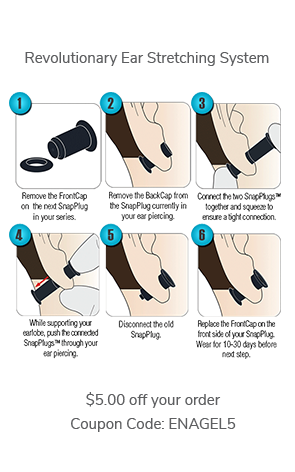Here's a message I received recently from a piercer who works in the studio of an old friend:
Hi Elayne!
I have been piercing for four years and came across something today I was wondering if you could help me with. A girl came into the shop today with her medusa pierced (about 2 months old), after having it previously pierced before, complaining that her old piercing site, a little big higher than the current piercing, would swell up with fluid (I assume to be lymph?) and drain a significant amount when she put pressure on it.
She also added her nipples were repierced about 2 years ago, and occasionally her old piercing sites would do the same thing.
I guess I've never really encountered this before. I suggested sea salt soaks and hot compressions to help. Is this sound advice? Do you know why something like that would happen? Could the fluid buildup be independent of the new piercing? Any advice would be awesome :)
Thank you so very much,
B.
My reply:
Hi B.,
It seems to me that you're offering sound advice. Unfortunately, there's no guarantee that it will be successful, but I'd suggest that your client try the soaks and warm compresses to help.
The phenomenon you inquired about is mentioned in my book at the bottom of this section:
Repiercing After Loss
When trauma, migration, or rejection results in the loss of a piercing, you can often be repierced—unless you were left with an excessive amount of scarring or lack of tissue pliability. After losing or abandoning your piercing under difficult circumstances, it is prudent to wait a year or more before repiercing.
Consider what caused your problem and what you can do differently so that it doesn’t happen again. When you do repierce, it is best to try a different size or style of jewelry, or alternate material or care regimen if you are not sure what went wrong previously. In cases of migration or rejection, ask yourself relevant questions: Did I sleep on the piercing? Did I experience an unusual amount of physical or emotional stress? Did I care for the piercing properly? Was my jewelry suitable?
Your piercer will usually position the new piercing behind any scar tissue, though this does not assure success, because scar tissue is weaker than regular skin, contrary to what many piercers believe.
Sometimes a migrated piercing that has been abandoned will remain an open channel, but it is too shallow to safely support jewelry. You can ignore an empty hole because it does not represent a health risk. But, when it comes to repiercing, sometimes an old channel becomes inflamed or infected after a new piercing is placed nearby. Due to continuous secretion or irritation from the previous piercing, occasionally these situations cannot be resolved satisfactorily and you will not be able to wear jewelry in the site.
You might want to read my chapter in The Piercing Bible on "Alternative Aftercare" as some of the herbs suggested for soaks may prove helpful. Something I didn't put in my book, but I've heard about is the use of green cabbage leaves for this type of problem. They are known to help diminish inflammation and result in a drying effect.
Here's a web page where directions are given for their use by nursing women with inflamed nipples: http://musom.marshall.edu/medctr/ped/patientbook/feeding-2.htm
Another effective treatment for uncomfortable, engorged breasts is placing cabbage leaves on your breasts.
Separate individual cabbage leaves from a head of cabbage and rinse in cold water.
Pat the leaves with paper towels to remove excess moisture.
Tap the leaves with a wooden spoon to soften the cabbage leaves a bit.
Lie on your back; cover your breasts with the cabbage leaves without covering your nipples.
Relax for about 20 minutes; the cabbage leaves will soften and become warm.
Remove the leaves.
You can use the cabbage leaves treatment up to four times in a 24-hour period.
I had a client (a male, by the way) who tried it successfully for some severe irritation he was experiencing from his nipple piercings.
Please keep me posted
Elayne




